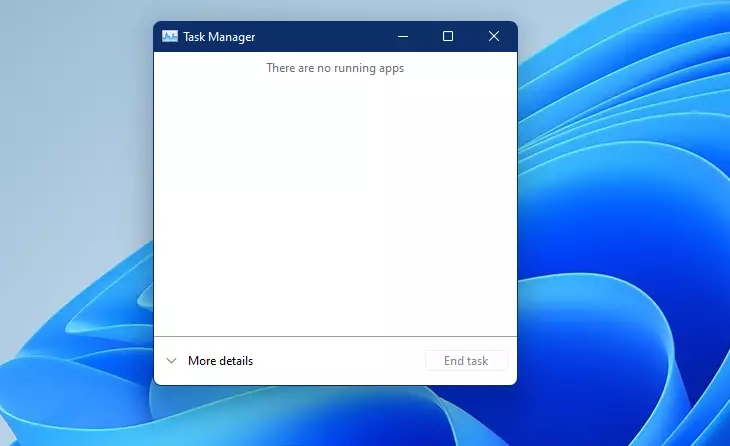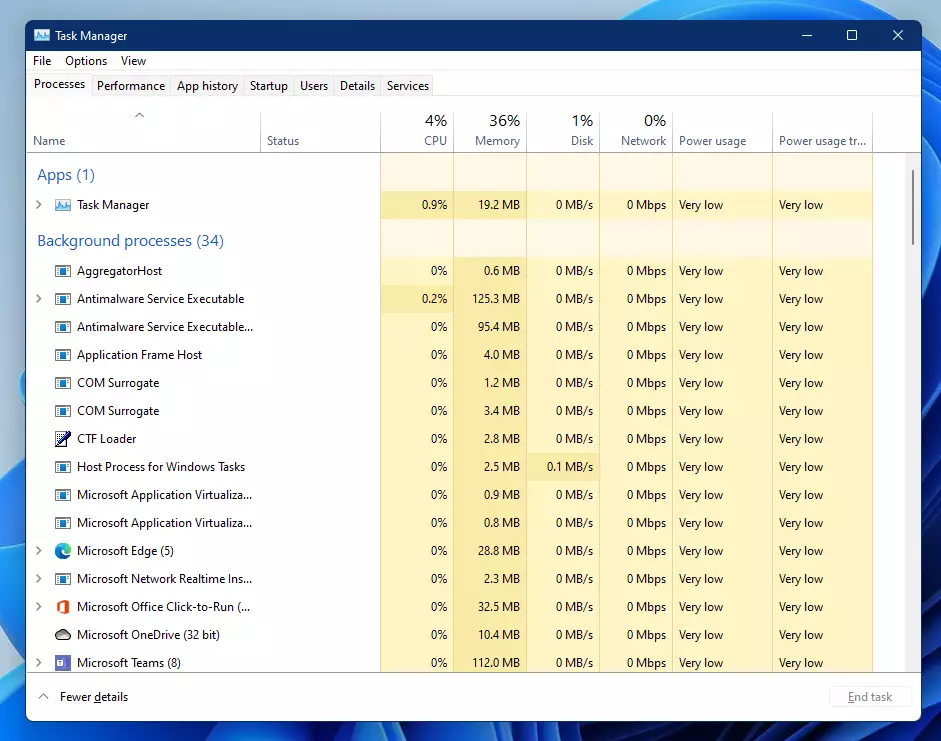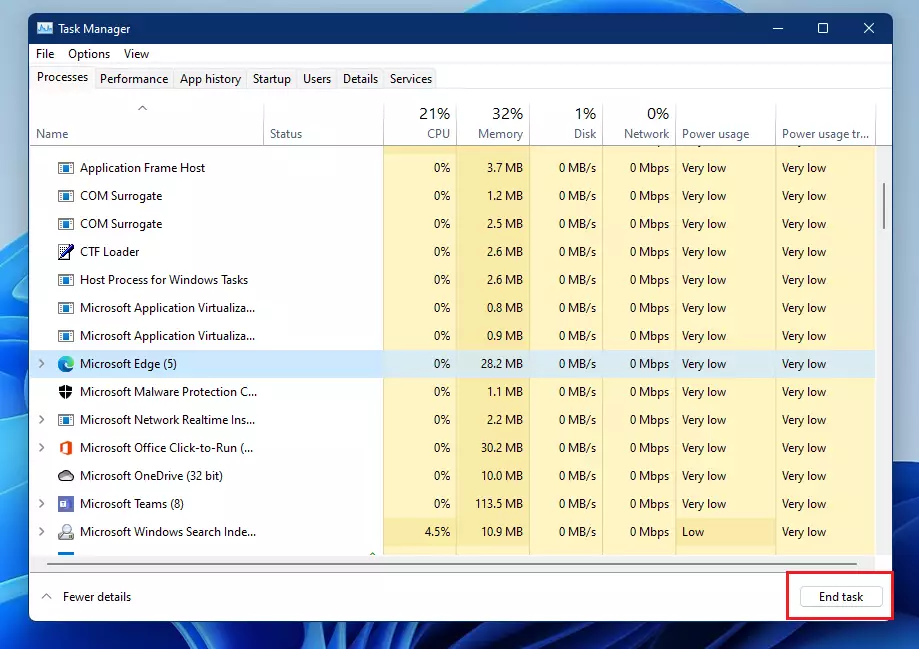This article explains how to end a program’s task or process in Windows 11.
If you have a hung or runaway app’s process impacting system performance, you can use Windows Task Manager to kill or end the app’s process. Windows Task Manager is a tool for monitoring and managing a system’s apps and processes.
If you find yourself in situations where an application is not responding and is frozen, you can use the Task Manager to kill the runaway process slowing down your PC. One might use other applications in Windows to end a task, but Windows Task Manager is simple, efficient, and already installed.
It can be frustrating when you have an application that won’t respond. Instead of shutting down your PC to regain control, which may cause you to lose your work, you can force quit the problem app or process using the Task Manager.
How to force quit an app in Windows 11
As mentioned above, Windows Task Manager can view and manage tasks, system performance, and more.
If you have an app incompatible with Windows and frequently freezes up your computer, you can use Windows Task Manager to end it.
First, open Windows Task Manager. There are multiple ways to open the Task Manager in Windows.
Alternatively, you can press CTRL + SHIFT + Esc to open it or CTRL + ALT + DELETE and select Task Manager from the screen that appears.
If Task Manager opens in simple mode, click More details to open an expanded and detailed window.

After expanding Task Manager to show more details, you’ll see a list of processes under the Processes tab and information about how much CPU, Memory, Disk activity, and Network bandwidth each process uses.

The app that is also not responding should be listed in the processes list. Find the app, typically using the most resources, and click the End task button.

When you end a program’s task or process, it will force the program to close. You will also lose any unsaved work if the program is forcibly closed by ending its process.
That should do it!
Conclusion:
- Ending a task using Windows Task Manager is a straightforward and effective method for resolving unresponsive applications.
- Always be cautious, as forcibly closing an application may lead to loss of unsaved data.
- Familiarizing yourself with Task Manager can enhance your ability to manage system performance and resolve issues quickly.
- Regularly check for app updates to minimize compatibility issues that could lead to freezes.
- Remember that alternative methods exist, but Task Manager is the most accessible tool already included with Windows 11.

Leave a Reply Cancel reply